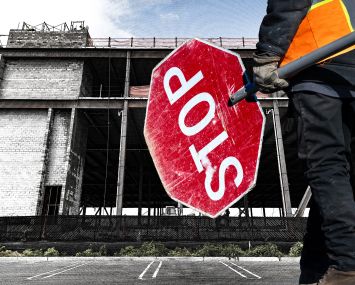Brick-and-Mortar Sleuthing: The Forensic Number-Crunchers Behind This Year’s Biggest Accounting Trend
By Jotham Sederstrom March 5, 2013 1:00 pm
reprintsThe recession and slow-growing economy of the past four years have led to more forensic lease audit work for accountants, as tenants and landlords try to rein in expenses.
Disputes over tenants’ responsibility for repair and improvement costs in addition to their base rent are seldom publicized, since they tend to be settled out of court, but substantial money can be at stake.
“In one instance, I actually recovered $1.9 million for a tenant,” said Thomas Woodward, director of real estate advisory services at Holtz Rubenstein Reminick LLP. “It’s not unusual for me to come up with a million here and a million there.”
 The forensic review, in which the landlord’s records are examined in detail, goes beyond what is covered in the typical “desktop audit,” in which expenses are compared with the prior year, Mr. Woodward said.
The forensic review, in which the landlord’s records are examined in detail, goes beyond what is covered in the typical “desktop audit,” in which expenses are compared with the prior year, Mr. Woodward said.
“The year-over-year percentage increases can look okay, but when you drill down into the detail, you find there are costs that are noncompliant with the lease terms, or capital improvements added to repairs,” he said. “I’m actually zoning in on items that pop out to me that are questionable.”
The audits generally hinge on a determination of what’s allowable under the lease and whether an expense is a capital improvement or a repair. If it’s a repair, the cost generally can be included in expenses paid by the tenant. If it’s a capital item, it’s more likely to be a cost to the landlord.
When a landlord makes a capital improvement that eliminates the need for repair work, such as an elevator modernization, the audit can determine how the costs should be divided. “You don’t want the landlord to be penalized,” Mr. Woodward said. But the tenant should be charged “only for the amount of repair that has been eliminated by doing the capital improvement.”
Over the years, building owners have learned to anticipate the disputes, said Seth Molod, a partner at Berdon LLP who does lease audit work for landlords.
“Most of our landlords are savvy, and write lease clauses in the right way,” Mr. Molod said. “Sometimes there are legitimate gray areas. Those positions can usually be worked out.”
Often, tenants wrongly assume that any large cost must be a capital item, Mr. Molod said. He gave the example of a building with a glass façade where the gaskets holding the windows in place have to be changed. While the gaskets may cost only about $3 each, the repair could add up to $5 million for a large building, because of the labor-intensive nature of the job.
“It’s not a capital item—you just put the window back in place,” Mr. Molod said. Still, “the tenant would try to throw out an argument to disagree with that.”
The disputes are one reason leases have grown more complex in cities like New York, where the buildings are bigger and the expenses higher.
“Generally the leases are getting better as far as detailing things, to avoid disputes going forward,” Mr. Molod said. “It’s a big-city issue. You don’t see a lot of these kinds of clauses in suburban office leases.”


